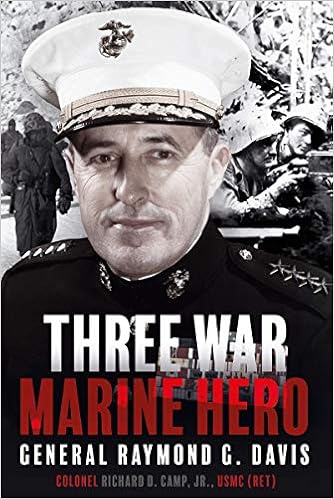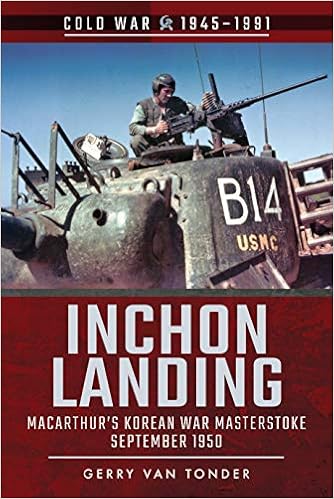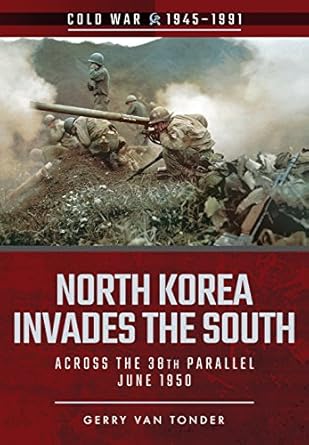Home / Korean War / Mission Command: A Look into The Korean War and The Battle of Chosin Reservoir
Mission Command: A Look into The Korean War and The Battle of Chosin Reservoir
By MSG James F. Seifert Jr.
"Mission command is the Army's approach to command and control that empowers subordinate decision making and decentralized execution appropriate to the situation" (Department of the Army [DA], 2019, p. 1-3). Army doctrine publication (ADP) 6-0 states that mission command relies on critical and creative thinking from subordinates that seize the initiative to develop plans and concepts to accomplish the mission (DA, 2019). Additionally, the mission command process requires leaders who understand and assume the appropriate risk levels to operations, not risk-averse or risk-tolerant. The Battle of Chosin Reservoir highlights some positive and negative takeaways of mission command from both the Chinese and American sides. The battle also spotlights where mission command and other components of mission command did not occur, causing blind spots leading to the withdrawal of United Nations (UN) forces from northern Korea. The purpose of this paper is to examine the Battle of Chosin Reservoir and analyze the successes and failures United States (US) Army's approach to mission command principles, the elements of command and control (C2), and the C2 warfighting function.
Mission Command Principles
The seven principles that make the foundation of mission command are competence, mutual trust, shared understanding, commander's intent, mission orders, disciplined initiative, and risk acceptance (DA, 2019). Orders may come in many forms from commanders providing explicit guidance on what operations and coordination must happen but do not give the subordinates the “how”, allowing them to achieve success within the commander's intent (DA, 2019). Within the Battle of Chosin Reservoir, the operation exhibited many elements in different capacities, but no side executed all the mission command principles. Some commanders sometimes overly executed or exhibited the mission command principles to a fault. Competence, mutual trust, and disciplined initiative are the three principles that positively stand out in the battle.
Competence
Competence forms from individuals, teams, and leaders that have the technical and tactical training through professional military education (PME) systems, field training exercises (FTX), and duty scopes throughout various unit types (DA, 2019). Additionally, DA (2019) describes training exercises as the foundation for building cohesive teams and success in attaining unity of effort. Berger et al. (1983) explained the training rigor of the 1st Marine Division from the accounts of Admiral Doyle, saying the Marines could utilize whatever they had regarding weapons, troops, and equipment to accomplish any mission set. Berger et al. (1983) further wrote that the training designs allowed Marines to remain interchangeable within the same skillset, a next-man-up concept to keep the pace of tempo in battle. The formation was battle-hardened from the conflicts in World War II (WWII), and most of his senior leaders remained for the Korean War (Berger et al., 1983). The experience gained by war and the specialized training regimens for the Marines undoubtedly enhanced the mutual trust between each Marine and leaders at the echelon to include outside of the Marine Corps to adjacent service branches.
Mutual Trust
DA (2019) states a mutual trust is the reliability of commanders to the lowest subordinate to execute orders and tasks effectively and efficiently based on their level of competence. Additionally, among the other principles, mutual trust is vital to achieving mission command during decentralized operations. Greer (2020) describes an account where the US Army's X Corps stretched its forward line of troops across 400 miles of the reservoir. Based on the terrain around the reservoir, there is minimal means of mutual support and required explicit mutual trust that adjacent commanders executed their piece of the operation.
Another example of mutual trust comes from two Privates (PVT), Hector Cafferata and Ken Benson, who engaged in heavy battle from their machine gun position with Chinese forces (Bill of Rights Institute [BRI], n.d.). The institute described their actions as throwing hand grenades, hitting hand grenades the enemy threw like baseballs and continuing to lay down heavy fire to survive. Additionally, their actions compelled the commander to reassemble his company and drive the enemy from the hill. Based on their competence, the mutual trust between the commander and Soldiers enabled the disciplined initiative principle of mission command as they could have allowed the enemy to pass through their position.
Disciplined Initiative
DA (2019) defines disciplined initiative as the actions conducted under the guidance given by commanders in their commander's intent to attain the ideal end state of operations. Soldiers' actions are within the confines of the orders given until those orders are no longer valid based on the changes incurred in the operational environment (OE). The disciplined initiative also refers to the actions of personnel that do not require constant communication for further instruction to complete missions or tasks (DA, 2019). The 5th and 7th Marine Regiment commanders exemplify disciplined initiative, working closely together throughout operations without established command structures (Berger et al., 1983). Additionally, the commanders once combined their forces during part of the operation in a defense, merging staffs and commands to protect support units without guidance from higher commands.
Another article by Li (2020) accounts for the Chinese Army maneuvering through the Rangrim Mountains during the winter, where the conditions of snow, ice, and narrow passageways did not allow them to navigate any further with their horses. Li (2020) stated that a few of the Soldiers had a bright idea to prepare the paths with their blankets so the horses could navigate the snow and ice more easily. Executing this action allowed the 20th Army to move an estimated 60 miles in four days instead of halting their movement due to weather conditions (Li, 2020). Understanding mission command principles allows commanders the ability to exercise C2 effectively.
Command and Control
As defined by ADP 6-0, C2 is the execution of authoritative actions and guidance given by a commander assigned over a group of units to conduct operations (DA, 2019). According to DA (2019), C2 captures the crucial principles of mutual trust and shared understanding and is vital to commanders exercising the arts and sciences of conflict. ADP 6-0 regards C2 as integrated and intertwined; commanders cannot execute one component without the other. However, command and control have separate definitions, as command is an authority granted to commanders to give lawful orders over their formations and additional units if assigned (DA, 2019). Control is the commander's movement of units and other elements on the battlefield to achieve operational success within the higher commander's intent. An example of C2, Greer (2020) captured the story when President Truman bestowed faith and trust on General MacArthur to devise a plan to assault North Korea. He planned to utilize his Marine force to conduct an amphibious assault. Acknowledging the simple yet complex nature of command and control, C2 breaks down into different elements, elements of command and elements of control, that detail how the two connect.
Elements of Command
The four subcomponents of command are authority, responsibility, decision-making, and leadership (DA, 2019). Furthermore, the duty of command directly reflects authority, either personally or charged by position and rank. The two subcomponents the Battle of Chosin Reservoir captures are responsibilities and leadership. Based on Berger et al. (1983) accounts, the 1st Marine Division regiment commanders exhibited the most authentic elements of responsibility and leadership through their direct leadership engagement. The commanders gave clear and concise orders on conducting offensive and subsequent defensive operations to achieve mission success. The assumption is that the welfare of the Marines was of the utmost concern for commanders, given the timeframe and unit cohesion throughout the conflict and the insurmountable Chinese force that the Marines faced. The actions of the Marine commanders denote special care for Soldiers in the preservation of assets. Commanders understanding how to command can effectively lead and control forces through the elements of control.
Elements of Control
DA (2019) states that control is the commander's movement and placement of forces as the OE changes. Furthermore, ADP 6-0 denotes that control has four subcomponents: direction, feedback, information, and communication (DA, 2019). The subcomponents assist commanders in seeing and making necessary updates to the end state or operational approach. Furthermore, the subcomponents build the situation, providing a shared understanding across formations. BRI (n.d.) notes that General MacArthur's actions during the battle do not exhibit the elements of control as he disregarded the feedback and information from interagency support and subordinate commanders. The only concern expressed by General MacArthur is his request for more troops for the emerging threat of China potentially entering the fight in Korea (Berger et al., 1983). The article continues to add comments about him not acknowledging or flat ignoring intelligence about an imminent frontal attack from the Chinese, thus causing the Marines to famously "attack in a different direction" (BRI, n.d., p. 5). Command and control are critical components in mission command and serve as an element of combat power in the C2 warfighting function.
Command and Control Warfighting Function
The C2 warfighting function (WfF) is one of eight components of combat power, including leadership, information, movement and maneuver, intelligence, fires, sustainment, and protection (DA, 2019). Additionally, the C2 WfF is one of six WfFs that make up the bulk of combat power elements. The C2 WfF allows commanders to integrate and synchronize all the components to attain operational success (DA, 2019). BRI (n.d.) claims that as the Marines transitioned to the south towards the port, adjacent units dropped artillery and airstrikes to assist them in the evacuation. In the movement, the C2 WfF consolidated and synchronized the five other functions to ensure the successful movement, namely the fires WfF. Understanding the capability of the C2 WfF, commanders and staff must fully employ all the elements of combat power through the function's tasks and C2 systems.
Command and Control Tasks
The C2 warfighting function assists commanders and staff in accomplishing missions through commanding forces, controlling operations, driving the operations process, and establishing the C2 system (DA, 2019). Greer (2020) stated that as the 8th Army proceeded south to the port, naval ships, and aircraft supported the operation to allow freedom of maneuver. The joint force employment is an example of the commander(s) controlling operations and forces effectively to avoid creating more casualties and turbulence in the withdrawal. The tasks in the C2 WfF have command and control systems to support their tasks.
Command and Control Systems
The C2 system is an assortment of people, processes, networks, and command posts (DA, 2019). Additionally, the systems enable commanders the ability to achieve mission success through having the people to command and maneuver, the processes to receive and distribute information, platforms in which to distribute the information, and the establishment of command nodes on the battlefield to relay and communicate to other commanders through command posts. Of the four systems, ADP 6-0 defines people as the most vital entity in C2 systems, as command and control require people to execute any operation or task (DA, 2019). BRI (n.d.) highlighted a moment in the battle when a critically wounded Marine attempted to fire upon the enemy. Additionally, the institute noted that the will of every Marine is to fight and be a rifleman when no one can fight.
Conclusion
This paper's analysis of the Battle of Chosin Reservoir aims to identify the strengths and shortcomings of using mission command concepts, C2 components, and the C2 warfighting function. Mission command is the foundation of all the elements of combat power, warfighting functions, systems, and tasks. However, commanders can only effectively command if they have all the essential principles of mission command. Commanders own a large part in the C2 elements regarding their leadership abilities and how they receive and push information. The takeaway is that if commanders are short in any of the elements of command or control, then operations may not have the best chance of success in execution. The people of the services are the essential variable to mission command.
| * * * |
References
Berger, F. M., Lenard, J. D., Wallace, W. S., Robichaud, R. S., & Mize, D. M. (1983). Chosin Reservoir: Defensive, retrograde, winter, 1st Marine Division, 27 November-11 December 1950.
https://apps.dtic.mil/sti/pdfs/ADA149352.pdf
Bill of Rights Institute. (n.d.). The Korean War and the Battle of Chosin Reservoir.
https://billofrightsinstitute.org/essays/the-korean-war-and-the-battle-of-chosin-reservoir
Department of the Army. (2019). Mission command: Command and control of Army forces (ADP 6-0).
https://armypubs.army.mil/epubs/DR_pubs/DR_a/ARN18314-ADP_6-0-000-WEB-3.pdf
Greer, P. J. (2020). Chosin Reservoir: The battle that stalled a war. The Saber and Scroll Journal, 9(3).
https://safe.menlosecurity.com/doc/docview/viewer/docN59EAFCB5CF987fb27f70cc0a0130f3cf8d2e13e9c9df0be95bcf53df0f19051cc9aa49586440
Li, X. (2020). Attack at Chosin: The Chinese second offensive in Korea.
https://books.google.com/books?hl=en&lr=&id=WSOzDwAAQBAJ&oi=fnd&pg=PR9&ots=bY_JhbUk4_&sig=6eoD_E_oJhgfSlq21_bWIBVQYMg#v=onepage&q&f=false
| * * * |
© 2025 MSG James F. Seifert Jr.
Written by James F. Seifert Jr.
About the author:
James F. Seifert Jr. is a student at the Sergeants Major Academy Class 73. He's an Active Duty Army Master Sergeant with 19 ½ years of service and a career Infantryman, having served with Airborne and Stryker Units. Reason for publishing: Gaining experience in the doctrine of mission command and analyzing a battle broadened my approach to seeing insights of our commands and how the enlisted force is an essential part of commanders ability to exercise command. Non-Commissioned Officers (NCOs) tend to not understand the finer details of the why or how decisions are made or how they, as soldiers, can contribute to commanders. In breaking down mission command, a unique understanding and perspective unfolded.
* Views expressed by contributors are their own and do not necessarily represent those of MilitaryHistoryOnline.com.





